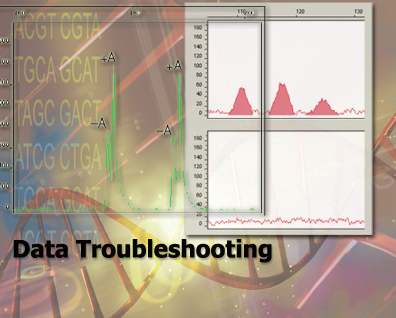Archival Notice
This is an archive page that is no longer being updated. It may contain outdated information and links may no longer function as originally intended.
Home | Glossary | Resources | Help | Contact Us | Course Map
Introduction
Short tandem repeat (STR) data analysis and interpretation in forensic DNA casework relies on an analyst's professional judgment and expertise. Procedures for analysis and interpretation are based on validation studies, published literature, population studies, and casework experience. Laboratory interpretation procedures are not meant to cover every situation but rather to establish a minimum standard for the interpretation of analytical results. Documented procedures contribute to objectivity and consistency and ensure that the conclusions drawn in casework are scientifically supported by analytical data.
A number of factors can introduce ambiguity into the analysis and interpretation process. Analysts must be able to identify and troubleshoot these ambiguities and understand their implications.
Additional Online Courses
- What Every First Responding Officer Should Know About DNA Evidence
- Collecting DNA Evidence at Property Crime Scenes
- DNA – A Prosecutor’s Practice Notebook
- Crime Scene and DNA Basics
- Laboratory Safety Programs
- DNA Amplification
- Population Genetics and Statistics
- Non-STR DNA Markers: SNPs, Y-STRs, LCN and mtDNA
- Firearms Examiner Training
- Forensic DNA Education for Law Enforcement Decisionmakers
- What Every Investigator and Evidence Technician Should Know About DNA Evidence
- Principles of Forensic DNA for Officers of the Court
- Law 101: Legal Guide for the Forensic Expert
- Laboratory Orientation and Testing of Body Fluids and Tissues
- DNA Extraction and Quantitation
- STR Data Analysis and Interpretation
- Communication Skills, Report Writing, and Courtroom Testimony
- Español for Law Enforcement
- Amplified DNA Product Separation for Forensic Analysts


